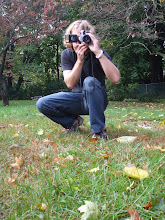Anthony began to squirm and forced his head through the thin barrier of his cocoon. He poked his little head out and saw what would be his surrogate mother. His actually mother, the queen would have nothing to do with him. It was the job of the other worker ants in the colony to look after Anthony and the other young ones. He pushed and pulled using all of his strength to make his way out of the cocoon as his mother looked on. Other young ants were also emerging from their cocoons. This was the colony’s nursery.
Anthony’s mother, Kathryn, leaned in and fed him some nectar.
“Wonderful job, Anthony,” Kathryn said.
“Mama?” Anthony said sluggishly.
“Yes dear, I will be your mother.”
He was already walking and his mother led him and a few others up a narrow tunnel. He could see a bright light ahead of him and wondered in amazement of what lay ahead. They quickly reached the surface. It was a warm July morning, Anthony scrunched his face, the bright light of the sun caused him to squint. He was able to see more clearly now. The multiple lenses in each eye now focused as one. He took a look around and was able to see his mother and the other young a lot better now. Each one was black with three body segments. Six legs were attached at the midsection. Large mandibles and antennae extended from their heads.
Tall blades of green grass surrounded them. Anthony’s mother reached over to grab a single blade that swooped down close to the ground. “Come here, Anthony,” Kathryn said.
“Yes, mama,” replied Anthony.
“Open your mouth.”
Anthony did as he was told. And she brought the grass to Anthony’s mouth and a single drop of dew feel into his mouth. The liquid was so warm and so sweet.






